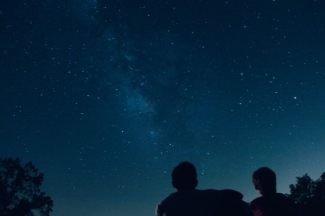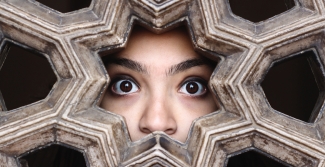The World’s Best Stargazing Spots
One of the most magical sights on Earth is a night sky full of dazzling stars. Since the beginning of time, humans have looked up at the stars with awe and wonderment, and it remains a popular pastime even today.
In our guide to the world’s greatest stargazing spots, Lenstore has analysed 29 locations across the globe based on the visibility of stars due to low light pollution and their popularity according to monthly search volume data from Google.
We have also included details of the number of lunar eclipses visible from each spot in 2022, and the dates they can be observed on.
Top 20 Locations in the World for Stargazing:
| Rank | Location | Country | Light Pollution Level - Radiance Levels* | Total Monthly Search Volume | Lunar Eclipses in 2022 |
| 1 | Mauna Kea, Hawaii | USA | -0.03 | 40 | 2 |
| 2 | Mont-Mégantic | Canada | -0.14 | 30 | 2 |
| 3 | Sedona, Arizona | USA | 0.05 | 30 | 2 |
| 4 | Cherry Springs State Park, Pennsylvania | USA | -0.02 | 20 | 2 |
| 5 | Natural Bridges National Monument, Utah | USA | 0.32 | 20 | 2 |
| 6 | Uluru | Australia | -0.01 | 50 | 1 |
| 7 | Wadi Rum | Jordan | 0.02 | 40 | 1 |
| 8 | The Atacama Desert | Chile | -0.04 | 30 | 1 |
| 9 | Iriomote-Ishigaki National Park | Japan | 0.01 | 30 | 1 |
| 10 | NamibRand Nature Reserve | Namibia | 0.01 | 30 | 1 |
| 11 | Pic du Midi | France | 0.12 | 30 | 1 |
| 12 | Aoraki Mackenzie International Dark Sky Reserve | New Zealand | -0.06 | 20 | 1 |
| 13 | La Fortuna | Costa rica | -0.01 | 20 | 1 |
| 14 | Tenerife, Canary Islands | Spain | -0.01 | 20 | 1 |
| 15 | La Palma, Canary Islands | Spain | -0.01 | 20 | 1 |
| 16 | Capulin Volcano National Monument | USA | 0.02 | 20 | 1 |
| 17 | Kruger National Park | South Africa | 0.03 | 20 | 1 |
| 18 | Hautes-Pyrénées | France | 0.11 | 20 | 1 |
| 19 | Los Angeles, California | USA | 0.82 | 20 | 1 |
| 20 | Hella | Iceland | 4.06 | 30 | 1 |
*A low light pollution score is better for stargazing than a high one. The less light pollution there is, the more radiant the stars appear.
Our research has revealed the top five places in the world to stargaze are all located within North America, with two lunar eclipses taking place in each spot throughout 2022.
Taking the top spot as number one on this list is Mauna Kea on the island of Hawaii. The dormant volcano is the second-highest peak of any island on Earth, with a light pollution level of -0.03 and a total monthly search volume of 40 – which is the second-highest figure for this metric across all of the locations in our analysis, after Uluru in Australia.
Following Mauna Kea, in second place is Mont-Mégantic in Quebec, Canada. This location has a light pollution level of -0.14, the second best after Denali National Park Reserve in Alaska, and a total monthly search volume of 30.

With a total search volume of 30 per month and a light pollution score of 0.05, the Arizona desert town of Sedona ranks third in our analysis, allowing stargazers to observe the night sky with low levels of obscurement from artificial lighting.
Cherry Springs State Park in Pennsylvania, USA comes fourth in our list of the top spots for stargazing. The 82-acre park has a light pollution level of -0.02 and a total monthly search volume of 20.
In fifth place, we have the Natural Bridges National Monument in Utah, USA, a scenic country park with three stream-carved natural bridges. The total search volume per month for this location is 20 and its light pollution level is 0.32, the highest figure for this metric out of our top five.
Top Locations for Stargazing in Europe
| Rank | Location | Country | Light Pollution Level - Radiance Levels | Total Monthly Search Volume | Lunar Eclipses in 2022 |
| 1 | Pic du Midi | France | 0.12 | 30 | 1 |
| 2 | Tenerife, Canary Islands | Spain | -0.01 | 20 | 1 |
| 3 | La Palma, Canary Islands | Spain | -0.01 | 20 | 1 |
| 4 | Hautes-Pyrénées | France | 0.11 | 20 | 1 |
| 5 | Hella | Iceland | 4.06 | 30 | 1 |
| 6 | Westhavelland Nature Park | Germany | 0.12 | 10 | 1 |
| 7 | The Wild Atlantic Way | Ireland | 0.18 | 10 | 1 |
| 8 | Kerry International Dark Sky Reserve | Ireland | 0.85 | 10 | 1 |
| 9 | Rhön Biosphere Reserve | Germany | 1.14 | 20 | 1 |
| 10 | Hortobágy National Park | Hungary | -0.7 | 0 | 1 |
| 11 | Zselic National Landscape Protection Area | Hungary | -0.1 | 0 | 1 |
Based on our analysis, Europe’s best location for stargazing is Pic du Midi, a mountain in the French Pyrenees range with a light pollution level of 0.12 and a total monthly search volume of 30.
Tenerife, the largest of Spain’s Canary Islands, and La Palma, its neighbouring volcanic ocean island, take second and third place in our analysis of European locations. Both of these stargazing spots have a total search volume of 20 per month and one lunar eclipse expected for 2022.
The two islands have a light pollution level of -0.01, which is the lowest of all of the places in Europe we analysed.
Hautes-Pyrénées is a department named after the Pyrenees mountains, situated along the French border with Spain. With a light pollution level of 0.11 and a total monthly search volume of 20, Hautes-Pyrénées comes next in our list.
Fifth is the small Icelandic town of Hella, from which one lunar eclipse will be visible in 2022 – the same as each of our European spots. Hella has a light pollution level of 4.06, the highest of all the spots across the world, and a total search volume of 30 per month.
Calendar of Lunar Eclipses 2022:
Anyone who is keen to observe both of the lunar eclipses taking place in 2022 should travel to one of the North American spots, as only one lunar eclipse will be visible outside of the continent during the year.
Below, we have listed the world’s top 10 places to stargaze, along with the number of lunar eclipses set to take place in 2022, and the dates they will be visible.
| Rank | Location | Country | Lunar Eclipses in 2022 | Dates |
| 1 | Mauna Kea, Hawaii | USA | 2 | 15-16 May, 7-8 November |
| 2 | Mont-Mégantic | Canada | 2 | 15-16 May, 7-8 November |
| 3 | Sedona, Arizona | USA | 2 | 15-16 May, 7-8 November |
| 4 | Cherry Springs State Park, Pennsylvania | USA | 2 | 15-16 May, 7-8 November |
| 5 | Natural Bridges National Monument, Utah | USA | 2 | 15-16 May, 7-8 November |
| 6 | Uluru | Australia | 1 | 7-8 November |
| 7 | Wadi Rum | Jordan | 1 | 15-16 May |
| 8 | The Atacama Desert | Chile | 1 | 15-16 May |
| 9 | Iriomote-Ishigaki National Park | Japan | 1 | 7-8 November |
| 10 | NamibRand Nature Reserve, Namibia | Africa | 1 | 15-16 May |
Stargazing is truly one of life’s most wonderful activities, especially when we are able to observe the magic of the night sky with complete precision and clarity. Taking care of our eye health is the best way to do this, and ensures we can always make the most of the breathtaking sights our natural world has to offer.
Sujata Paul, Professional Services Clinical Lead at Lenstore and Contact Lens Optician FBDO/CL says, “Observing a clear night sky for any astronomical activity & enjoying the beauty of the stars cannot harm you like an eclipse can. However, staring up at the night sky for too long in one sitting can cause eye strain similar to that of computer use & other close work. The symptoms of which can include eye soreness, headaches and blurred vision.
If you’re planning a trip to one of our stargazing spots, you can avoid eye strain by taking regular breaks using the ‘20-20-20’ rule: every 20 minutes, shifting your focus to another object 20 feet away for at least 20 seconds. Use eye drops to refresh your eyes if you feel them becoming dry or tired.”
For expert optical care, book a free eye test and contact lens check up today.
ENDS
Methodology
We collected data across five metrics for 29 different locations to determine which was best for observing the stars – see metrics used below. Each metric was awarded a weighted score, which we then combined to give every location a final index score out of 10. This score was then used to rank the locations from best to worst.
Metrics
- Light pollution level
- Country search volume
- Location search volume
- Total search volume
- Lunar Eclipses in 2022
Sources
Locations to Stargaze
- https://www.tourradar.com/days-to-come/places-to-go-stargazing-europe/ https://www.travelandleisure.com/trip-ideas/nature-travel/best-places-to-see-stars-around-the-world
- https://www.afar.com/magazine/incredible-places-to-stargaze-around-the-world
- https://www.lonelyplanet.com/articles/best-places-for-dark-skies
- https://www.nationalgeographic.com/travel/article/best-spots-on-the-planet-for-stargazing
Light Pollution Data
- https://www.lightpollutionmap.info/#zoom=3.36&lat=49.7998&lon=8.5345&layers=B0TFFFFFFFFFFFFFFFFF
Lunar Eclipses
- https://www.timeanddate.com/eclipse/2022
Search Volume
- Google Keyword Planner








